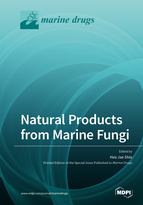Natural Products from Marine Fungi
A special issue of Marine Drugs (ISSN 1660-3397).
Deadline for manuscript submissions: closed (28 February 2020) | Viewed by 47819
Special Issue Editor
Interests: marine natural products; biomedical applications; drug discovery; anticancer compounds; anti-inflammatory compounds; antimicrobial compounds
Special Issues, Collections and Topics in MDPI journals
Special Issue Information
Dear Colleagues,
Marine fungi are widely-distributed in different marine habitats, from the deep sea to polar ice covers. Marine fungi are well known for their capability of producing new natural products. Recent studies have revealed the potential of marine fungi as a source of secondary metabolites with vast chemodiversity and bioactivity. The variety of species and their capabilities to adapt to a variety marine environment demonstrate that marine fungi continue to be a rich source of new metabolites.
As a Guest Editor for this Special Issue, I invite you to submit your research findings on marine fungi ranging from the isolation and structure elucidation of new natural products to biosynthetic pathways of marine fungal metabolites.
Prof. Hee Jae Shin
Guest Editor
Manuscript Submission Information
Manuscripts should be submitted online at www.mdpi.com by registering and logging in to this website. Once you are registered, click here to go to the submission form. Manuscripts can be submitted until the deadline. All submissions that pass pre-check are peer-reviewed. Accepted papers will be published continuously in the journal (as soon as accepted) and will be listed together on the special issue website. Research articles, review articles as well as short communications are invited. For planned papers, a title and short abstract (about 100 words) can be sent to the Editorial Office for announcement on this website.
Submitted manuscripts should not have been published previously, nor be under consideration for publication elsewhere (except conference proceedings papers). All manuscripts are thoroughly refereed through a single-blind peer-review process. A guide for authors and other relevant information for submission of manuscripts is available on the Instructions for Authors page. Marine Drugs is an international peer-reviewed open access monthly journal published by MDPI.
Please visit the Instructions for Authors page before submitting a manuscript. The Article Processing Charge (APC) for publication in this open access journal is 2900 CHF (Swiss Francs). Submitted papers should be well formatted and use good English. Authors may use MDPI's English editing service prior to publication or during author revisions.
Keywords
- marine fungi
- marine fungal natural products
- biosynthetic pathways of fungal metabolites
- fungal diversity
- marine microorganisms
- novel therapeutic agents
- bioactive compounds







